Here is a fun prioritization exercise. Some have described it as a Jedi mind trick. It is very simple but it plays with people’s head in a good way. It draws heavily from Joshua Arnold's work on cost of delay, particularly this article on qualitative cost of delay. I’m basically describing a fun workshop hack around Josh’s work.
It is also a fascinating exploration of cognitive bias.
First, I ask the team to organize their initiatives based purely on urgency—one axis, not two. I describe the many scenarios where urgent things aren't necessarily valuable, and valuable things aren't necessarily urgent. I stress that questions of urgency—when to enter a market, when to care about competitors, near-term risk vs. long-term risk—are inherently strategic.
I also contrast situations where:
Delay causes you to lose all or some of the upside (like beating a competitor to an opportunity or fixing a problem that could spin out of control)
Delay may be painful, but it doesn't get more painful over time (like delaying a cost-saving opportunity where the costs don't balloon over time).
In short, I do whatever I can to put urgency in perspective and leave value out of the picture (for now). It's a bit of a mind game because humans are not very good at these two things. A team will say something is urgent even when working on it for quarters or years (or the company has delayed prioritizing it for years). Contrast this with an outage or an existential crisis in the business. It wasn't that urgent.
If they have trouble, I enforce a "curve" and ask them to stick to a distribution (Whenever, Soon, and ASAP descriptions are from Joshua).
Once I'm comfortable with the distribution (or I've used up all of my tricks), we proceed to value. I shift everything down to the BOTTOM of a 2x2. We start with the premise that nothing is valuable.
This is where things get interesting. The only move they have at their disposal is the VERTICAL movement. They can't shift urgency. To help a team, I label the Y axis with something like Game Change, Optimizer, and Tweak.
Building on tactics from the urgency exercise, we stress that all things can't be equally valuable(but that doesn't make them not worth doing. I also make a huge effort to leave duration out of the question—more on that later. A "small win" isn't very valuable, but it could be worth doing.
Once they've got a reasonable distribution, we proceed to the final step: duration.
I turn whatever they have into a 9-box and divide each cell into three columns: 1-3mo, 1-3q, and 1-3y. Then, I instruct the team to place the initiatives in one of the three columns FOR THE CURRENT CELL. No moving around to different cells. It looks a bit like this:
And then the grand reveal (a example from a real exercise with stickies made blank)
Notice what’s happening? Something can be Soon + Game Changer + 1-3y, and that is equivalent to ASAP + Optimizer + 1-3Y. Both should be sequenced after anything in green (Highest CD3).
They've organized their work in three weighted cost of delay categories 😀— high, medium, and low. In theory, we should work on the items in descending order.
So what happened behind the scenes? In the first two exercises, we discovered the opportunity cost (or cost of delay) of the opportunity. The urgency and value decoupling is a mind game, but it works. In the final step, we layered in duration to arrive at a weight cost of delay (CoD/duration), which is a useful tool for sequencing.
Ta Dah!
The funny part. Humans are weird. You may only be able to use this trick once.

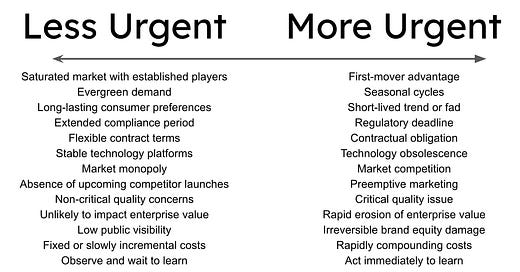



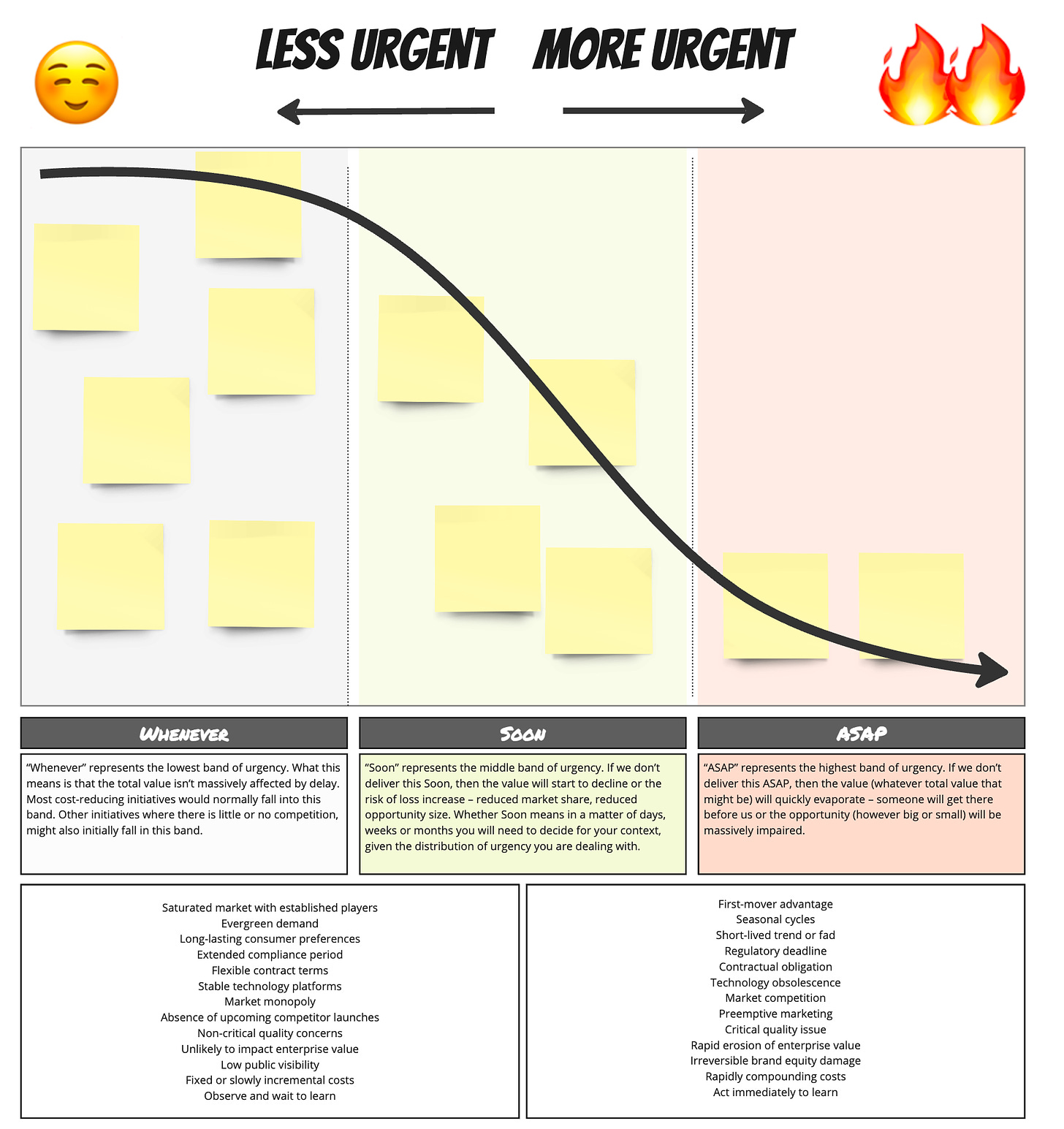

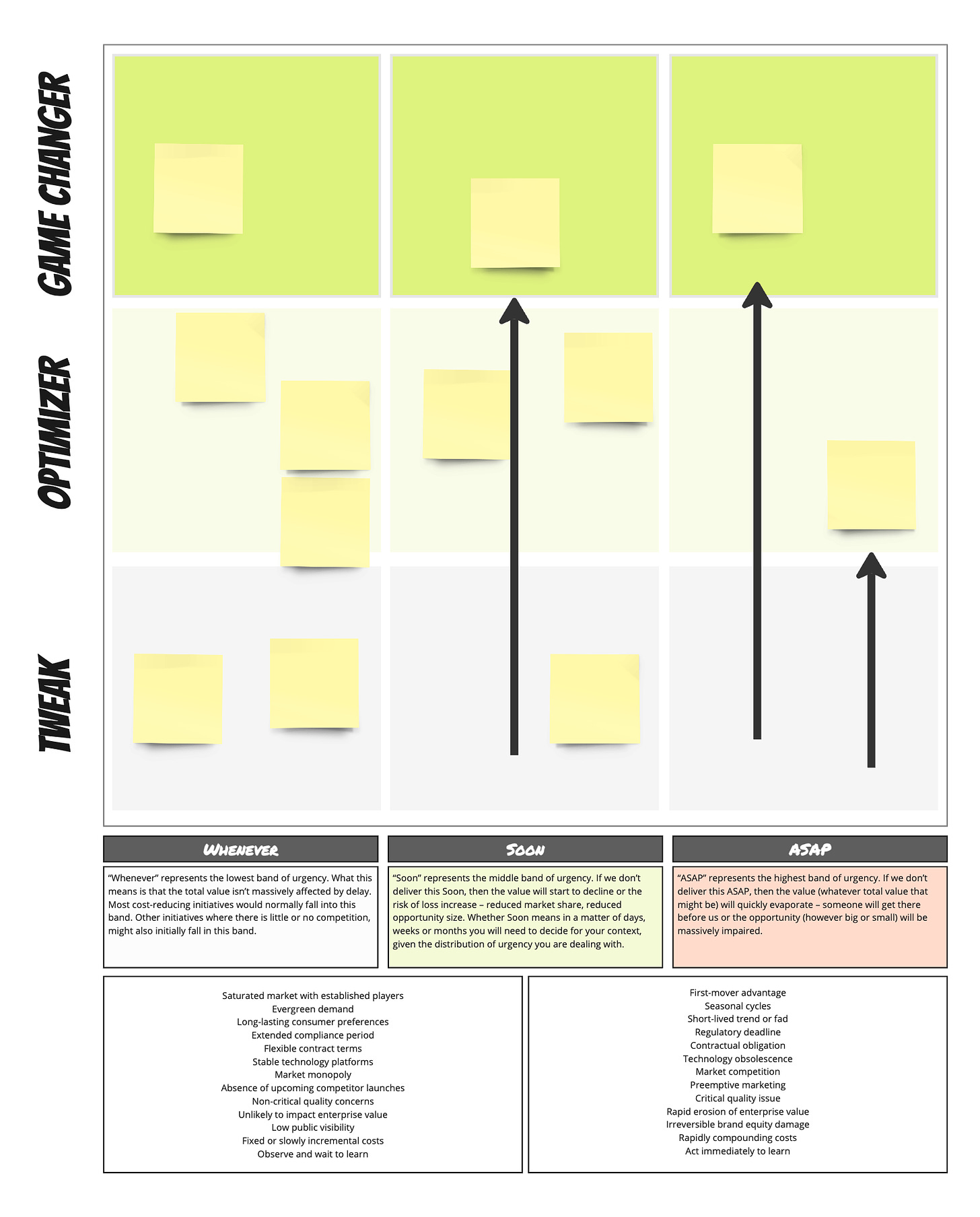
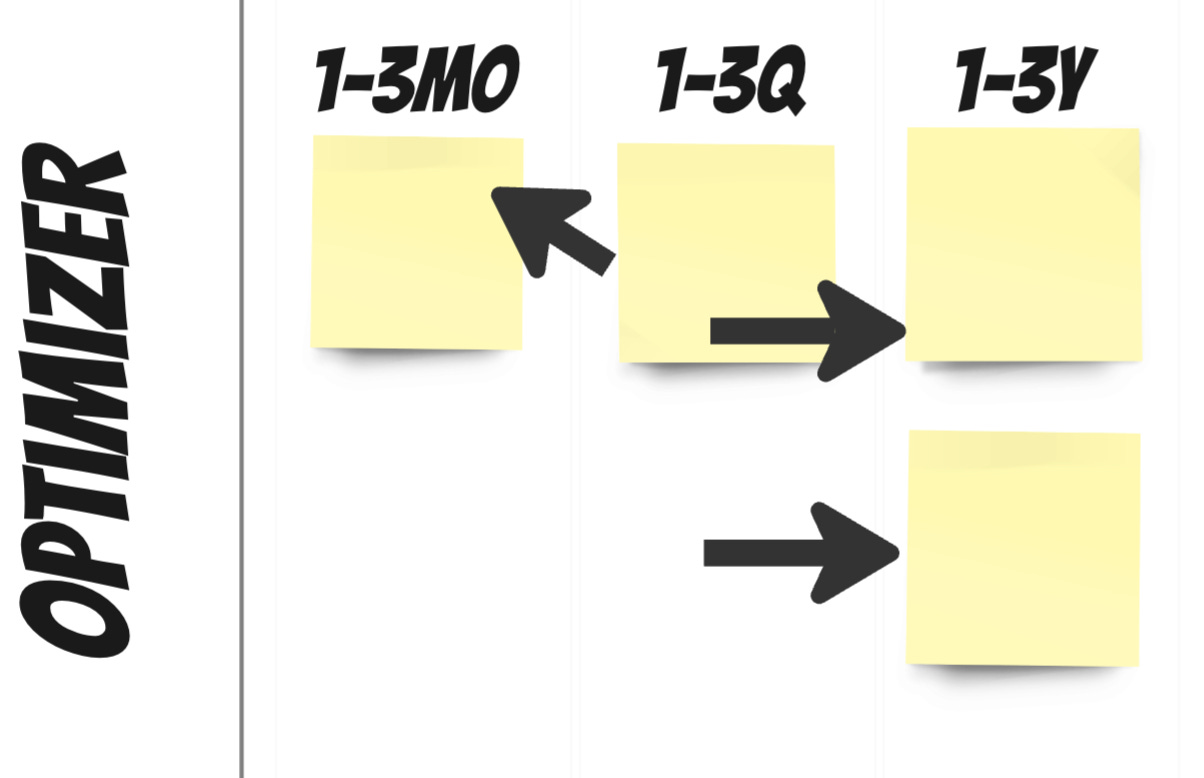
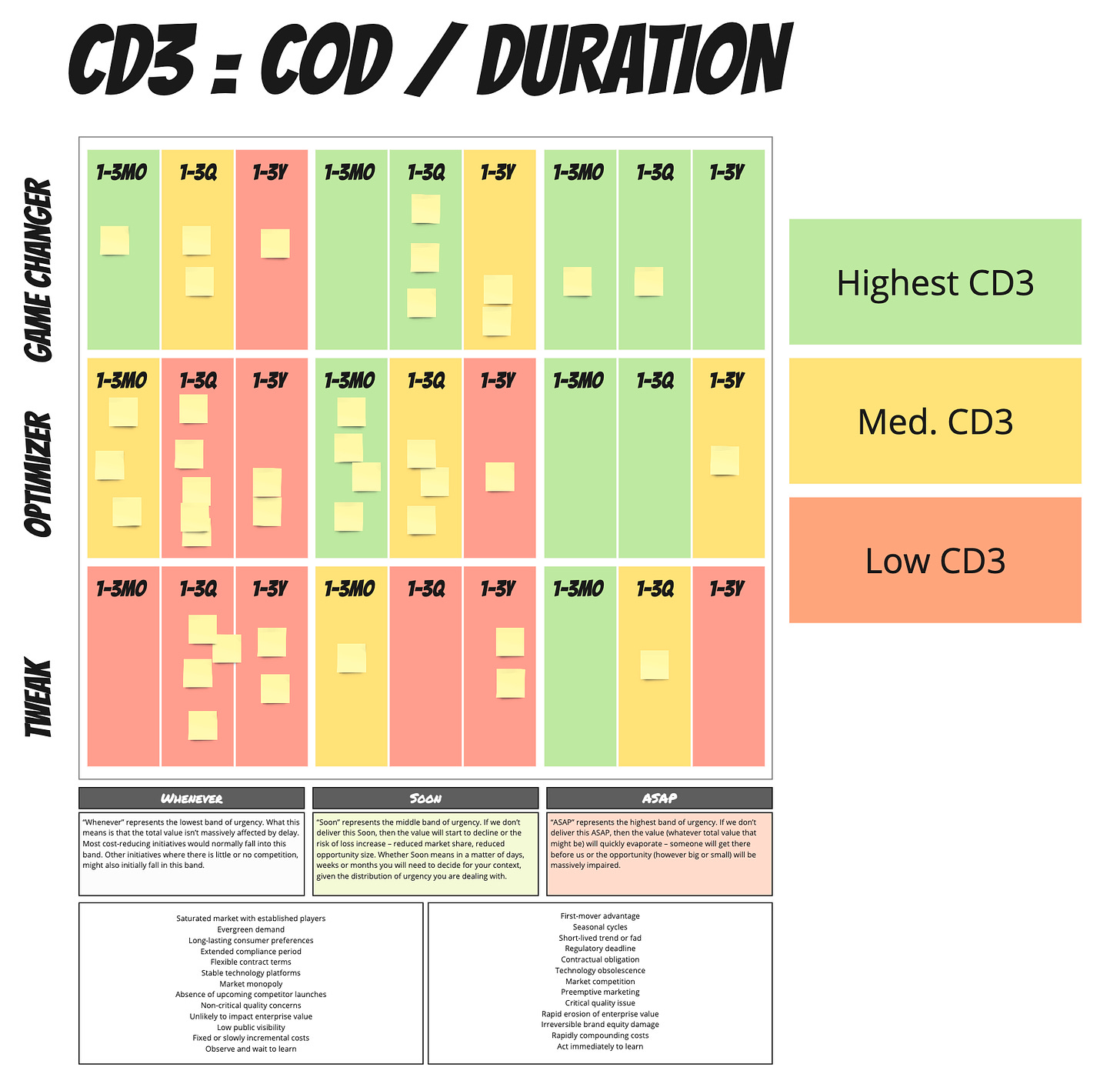
Interesting concept. Out of curiosity, how many years have you used this in production? I ask b/c it seems the equation weights longer duration items less, which may cause you to delay starting them in favor of shorter duration ones, when sometimes you may have needed to start the longer duration ones sooner because they take longer to complete (say, to meet a soft or hard deadline 1-3yrs in the future). If you’ve used this in production for at least 3yrs, I’m curious if you’ve ever done a postmortem and realized you should have started a longer-duration task sooner, but were steered away from it by this calculation. And if so is there a way of accounting or adjusting for that?
Nice technique, I will have to try it out.
What does CD3 mean?
Do you have this saved as a Miroverse template by any chance?
Thanks a lot!